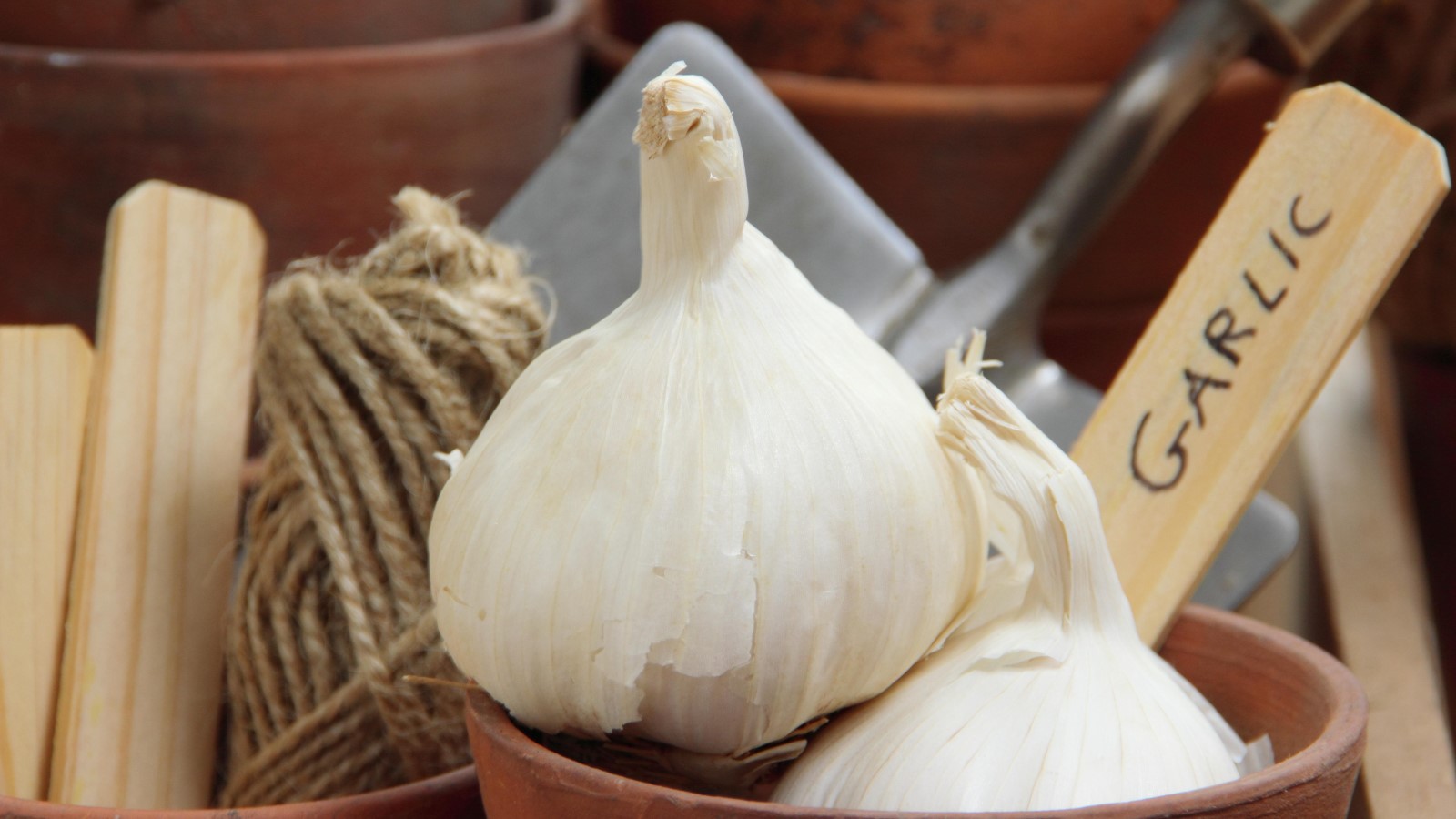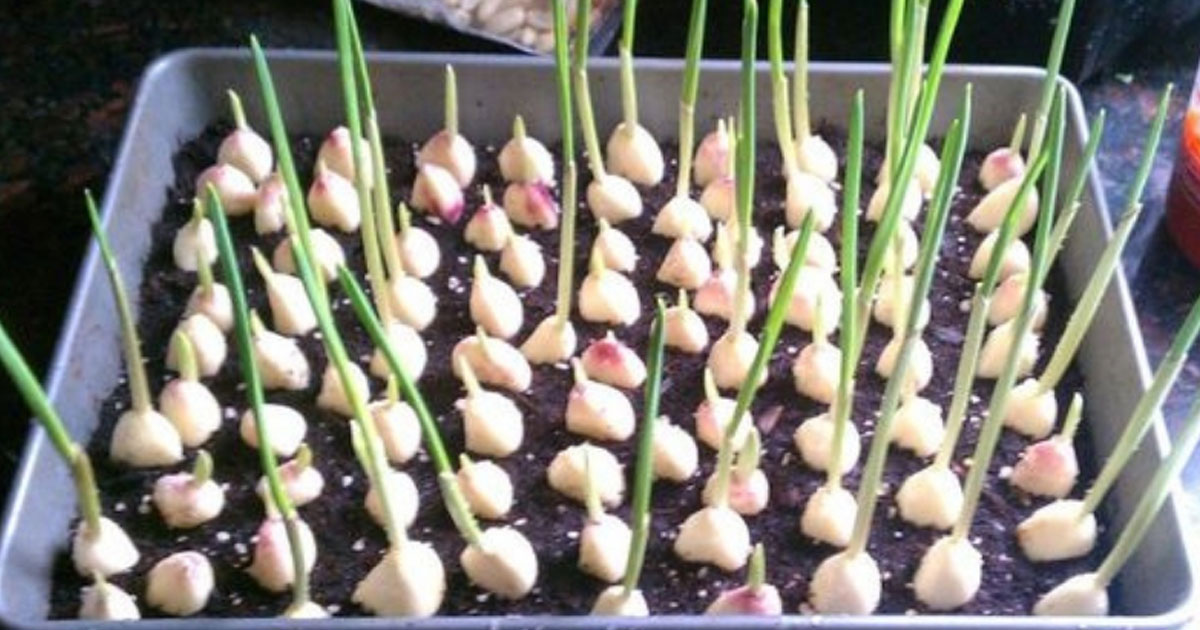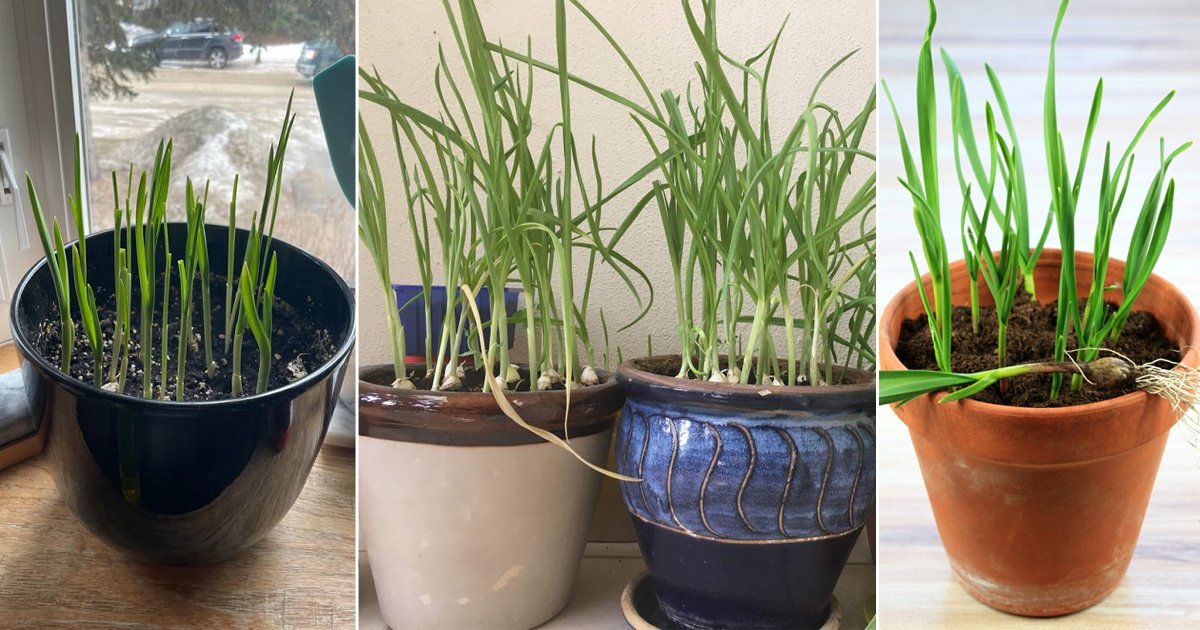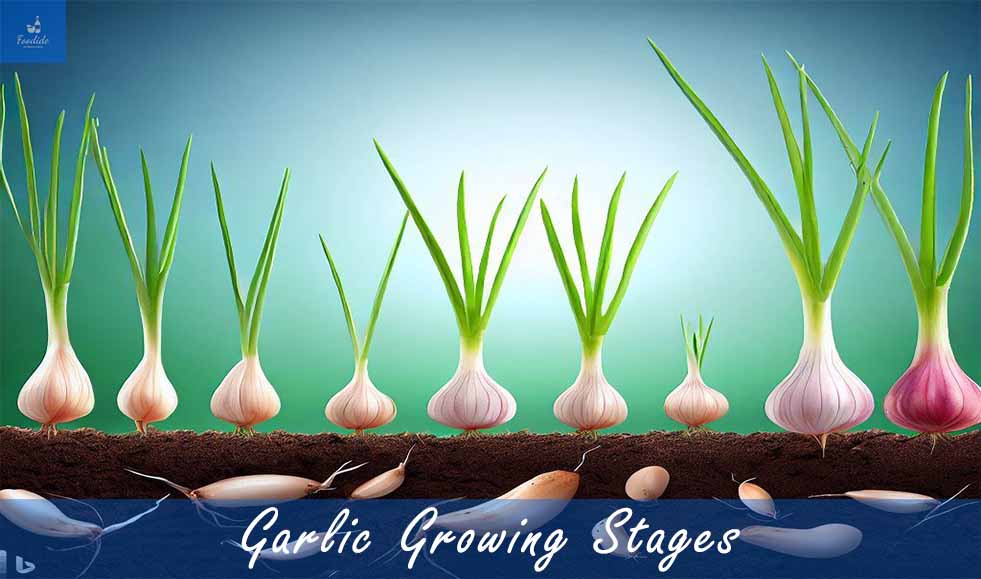Unlocking the Secrets of Indoor Garlic Growth
Growing garlic indoors is a rewarding and delicious experience that offers numerous benefits, including year-round production, space-saving, and pest control. With the right techniques and conditions, anyone can successfully cultivate garlic indoors, regardless of their gardening experience. This article will guide you through the process of growing garlic indoors, providing valuable insights and tips to help you achieve a bountiful harvest.
Indoor garlic growth is an excellent option for those with limited outdoor space or who want to extend the growing season. By replicating the ideal conditions for garlic growth, you can enjoy a continuous supply of fresh, flavorful garlic throughout the year. Whether you’re a seasoned gardener or a beginner, growing garlic indoors is a fun and rewarding experience that can add a new dimension to your culinary creations.
Before diving into the specifics of indoor garlic growth, it’s essential to understand the basics of garlic cultivation. Garlic is a cool-season crop that typically thrives in temperate climates with moderate temperatures and adequate moisture. By mimicking these conditions indoors, you can create an environment that fosters healthy garlic growth and maximizes yields.
When it comes to growing garlic indoors, the key is to provide the right combination of light, temperature, and humidity. Garlic requires a period of cold temperatures to induce bulb formation, which can be achieved using a refrigerator or a cold frame. Once the garlic is planted, it’s crucial to maintain a consistent temperature between 60°F to 70°F (15°C to 21°C) and ensure adequate moisture levels.
By following these guidelines and tips, you can successfully grow garlic indoors and enjoy the many benefits that come with it. Whether you’re looking to add some freshness to your cooking or simply want to experiment with a new gardening technique, indoor garlic growth is an excellent option that’s sure to please.
Choosing the Right Garlic Variety for Indoor Growth
When it comes to growing garlic indoors, selecting the right variety is crucial for success. With over 600 varieties of garlic to choose from, it’s essential to consider factors such as climate, space, and desired flavor profile to ensure optimal growth and flavor. For indoor garlic growth, popular varieties like ‘Elephant’ and ‘Silverskin’ are excellent choices due to their compact growth habit and mild flavor.
‘Elephant’ garlic, also known as ‘Russian Giant’, is a popular variety for indoor growth due to its large, mild cloves and compact growth habit. This variety is well-suited for indoor containers and can thrive in a variety of lighting conditions. ‘Silverskin’ garlic, on the other hand, is a popular choice for its sweet, nutty flavor and compact growth habit. This variety is ideal for indoor growth and can be harvested in as little as 90 days.
Other factors to consider when selecting a garlic variety for indoor growth include the level of sunlight and temperature. Some garlic varieties, such as ‘Creole’ and ‘Asiatic’, require full sun and warmer temperatures, while others, like ‘Rocambole’ and ‘Porcelain’, prefer partial shade and cooler temperatures. By selecting a variety that matches your indoor growing conditions, you can ensure optimal growth and flavor.
In addition to considering the variety, it’s also essential to choose high-quality garlic cloves for planting. Look for cloves that are firm, plump, and free of mold or damage. Avoid using garlic from the supermarket, as it may be treated with chemicals that inhibit sprouting. Instead, purchase garlic cloves from a reputable nursery or online supplier to ensure the best results.
By selecting the right garlic variety and high-quality cloves, you can set yourself up for success when growing garlic indoors. Whether you’re a seasoned gardener or a beginner, the right variety can make all the difference in achieving a bountiful and flavorful harvest.
Preparing the Ideal Indoor Environment for Garlic Growth
Creating an ideal indoor environment is crucial for successful garlic growth. Garlic requires a specific set of conditions to thrive, including temperature, humidity, and light. By replicating these conditions indoors, you can provide your garlic crop with the best possible start.
Temperature is a critical factor in garlic growth. Garlic typically thrives in temperatures between 60°F to 70°F (15°C to 21°C). To achieve this temperature range indoors, you can use heating mats or thermostatically controlled heaters. Avoid placing your garlic crop near drafty windows or doors, as this can cause temperature fluctuations.
Humidity is another essential factor in garlic growth. Garlic prefers a relatively high humidity level, typically above 50%. To maintain optimal humidity levels, you can use humidifiers or group plants together to create a microclimate. Avoid overwatering, as this can lead to fungal diseases and root rot.
Light is also a critical factor in garlic growth. Garlic requires bright, indirect light to photosynthesize and grow. To provide your garlic crop with sufficient light, you can use grow lights or place them near a sunny window. Avoid direct sunlight, as this can cause scorching and damage to the leaves.
In addition to temperature, humidity, and light, garlic also requires good air circulation to prevent fungal diseases. To ensure good air circulation, you can use fans or place your garlic crop in a well-ventilated area.
By providing your garlic crop with the ideal indoor environment, you can set yourself up for success and enjoy a bountiful harvest. Remember to monitor your garlic crop regularly and adjust the environment as needed to ensure optimal growth and flavor.
Some popular options for creating an ideal indoor environment for garlic growth include:
- Grow lights: These can provide your garlic crop with the necessary light spectrum and intensity for optimal growth.
- Heating mats: These can help maintain a consistent temperature and provide warmth to the roots.
- Humidifiers: These can help maintain optimal humidity levels and prevent fungal diseases.
- Fans: These can provide good air circulation and prevent fungal diseases.
By using these tools and techniques, you can create an ideal indoor environment for garlic growth and enjoy a successful harvest.
Planting and Caring for Your Indoor Garlic Crop
Once you have prepared the ideal indoor environment for garlic growth, it’s time to plant your garlic cloves. Planting garlic indoors is a relatively simple process that requires some basic knowledge of soil selection, planting depth, and spacing.
Soil selection is crucial for indoor garlic growth. Garlic prefers well-draining, fertile soil that is rich in organic matter. You can use a high-quality potting mix specifically designed for indoor gardening. Avoid using garden soil from your outdoor garden, as it may contain pests and diseases that can harm your indoor garlic crop.
Planting depth is also important for indoor garlic growth. Plant the garlic cloves 2-3 inches deep, with the pointed end facing upwards. Space the cloves 4-6 inches apart, depending on the variety. You can plant multiple cloves in the same container, as long as they have enough space to grow.
Watering is another critical aspect of caring for your indoor garlic crop. Garlic prefers moist soil, but make sure not to overwater. Check the soil daily, and water only when the top inch of soil feels dry to the touch. Avoid getting water on the leaves or crown of the plant, as this can cause rot and other diseases.
Fertilizing is also essential for indoor garlic growth. Use a balanced, water-soluble fertilizer that is specifically designed for indoor gardening. Follow the instructions on the label, and avoid overfertilizing, as this can cause more harm than good.
Pruning is another important aspect of caring for your indoor garlic crop. Remove any dead or dying leaves, as these can harbor pests and diseases. You can also trim back the leaves to encourage the plant to focus its energy on bulb formation.
Some popular tips for caring for your indoor garlic crop include:
- Monitor the temperature and humidity levels regularly to ensure optimal growth.
- Provide your garlic crop with sufficient light, but avoid direct sunlight.
- Water your garlic crop carefully, avoiding overwatering and underwatering.
- Fertilize your garlic crop regularly, following the instructions on the label.
- Prune your garlic crop regularly, removing any dead or dying leaves.
By following these tips and guidelines, you can ensure a healthy and productive indoor garlic crop. Remember to be patient, as garlic growth can take several months. With proper care and attention, you can enjoy a bountiful harvest of delicious, homegrown garlic.
Common Challenges and Solutions for Indoor Garlic Growth
While growing garlic indoors can be a rewarding experience, it’s not without its challenges. Common issues that may arise include pests, diseases, and nutrient deficiencies. In this section, we’ll discuss some of the most common challenges and provide solutions and troubleshooting tips to help you overcome them.
Pests are a common problem when growing garlic indoors. Aphids, spider mites, and mealybugs are just a few of the pests that can infest your garlic crop. To prevent pest infestations, make sure to inspect your plants regularly and remove any infested leaves or stems. You can also use neem oil or insecticidal soap to control pest populations.
Diseases are another common challenge when growing garlic indoors. Fungal diseases such as powdery mildew and botrytis can cause significant damage to your garlic crop. To prevent fungal diseases, make sure to provide good air circulation and avoid overwatering. You can also use fungicides to control fungal diseases.
Nutrient deficiencies are also a common challenge when growing garlic indoors. Garlic requires a balanced diet of nutrients to grow and thrive. To prevent nutrient deficiencies, make sure to use a high-quality potting mix and fertilize your garlic crop regularly. You can also use soil tests to determine the nutrient levels in your soil.
Some common solutions for indoor garlic growth challenges include:
- Using neem oil or insecticidal soap to control pest populations.
- Providing good air circulation to prevent fungal diseases.
- Using fungicides to control fungal diseases.
- Using a high-quality potting mix and fertilizing regularly to prevent nutrient deficiencies.
- Monitoring your garlic crop regularly to catch any potential problems early.
By being aware of the common challenges and solutions for indoor garlic growth, you can take steps to prevent problems and ensure a healthy and productive garlic crop.
Some additional tips for troubleshooting common challenges include:
- Keep a gardening journal to track your progress and identify any potential problems.
- Research common garlic diseases and pests to learn more about prevention and control methods.
- Join online gardening communities to connect with other gardeners and learn from their experiences.
- Consult with local gardening experts or extension agents for personalized advice and guidance.
By following these tips and being proactive, you can overcome common challenges and enjoy a successful and rewarding indoor garlic crop.
Harvesting and Storing Your Homegrown Indoor Garlic
After months of careful cultivation, your indoor garlic crop is finally ready to harvest. Harvesting garlic indoors requires some finesse, but with the right techniques, you can enjoy a bountiful and flavorful crop.
The first step in harvesting garlic indoors is to check for readiness. Garlic is ready to harvest when the tops of the plants begin to yellow and fall over. This is usually around 3-4 months after planting, depending on the variety and growing conditions.
Once you’ve determined that your garlic is ready to harvest, it’s time to dig. Use a fork to carefully loosen the soil around the garlic bulbs, being careful not to damage the bulbs themselves. Then, use your hands or a small tool to gently lift the bulbs out of the soil.
After harvesting, it’s essential to cure your garlic bulbs to maintain their flavor and aroma. Curing involves drying the bulbs in a warm, dry place with good air circulation. You can use a paper bag or a breathable container to cure your garlic, making sure to check on them regularly to ensure they’re not developing any mold or mildew.
Once your garlic is cured, you can store it in a cool, dry place to enjoy throughout the year. You can store garlic in a variety of ways, including in paper bags, mesh bags, or even in a garlic keeper. Just be sure to keep your garlic away from direct sunlight and moisture to maintain its flavor and aroma.
Some popular tips for harvesting and storing garlic indoors include:
- Harvesting garlic when the tops of the plants begin to yellow and fall over.
- Using a fork to carefully loosen the soil around the garlic bulbs.
- Curing garlic bulbs in a warm, dry place with good air circulation.
- Storing garlic in a cool, dry place to maintain its flavor and aroma.
- Using a garlic keeper or paper bag to store garlic.
By following these tips and techniques, you can enjoy a bountiful and flavorful indoor garlic crop all year round.
Some additional tips for maximizing your indoor garlic yield include:
- Planting multiple garlic varieties to extend the harvest season.
- Using a garlic planter or container to optimize space and yield.
- Providing your garlic crop with optimal growing conditions, including temperature, humidity, and light.
- Monitoring your garlic crop regularly to catch any potential problems early.
By incorporating these tips and techniques into your indoor garlic growing routine, you can enjoy a more bountiful and flavorful crop.
Tips for Maximizing Your Indoor Garlic Yield
While growing garlic indoors can be a rewarding experience, there are several tips and tricks that can help you maximize your yield and enjoy a more bountiful harvest.
One of the most effective ways to maximize your indoor garlic yield is through crop rotation. By rotating your garlic crop with other plants, such as lettuce or spinach, you can create a more diverse and resilient indoor garden. This can also help to reduce the risk of pests and diseases, which can be a major challenge when growing garlic indoors.
Companion planting is another effective way to maximize your indoor garlic yield. By planting garlic alongside other plants that complement its growth, such as basil or mint, you can create a more harmonious and productive indoor garden. This can also help to repel pests and attract beneficial insects, which can be a major benefit when growing garlic indoors.
Soil amendments are also an important consideration when growing garlic indoors. By adding organic matter, such as compost or manure, to your soil, you can create a more fertile and productive growing environment. This can help to promote healthy growth and maximize your yield.
Some popular tips for maximizing indoor garlic yield include:
- Rotating your garlic crop with other plants to create a more diverse and resilient indoor garden.
- Companion planting with other plants that complement garlic growth, such as basil or mint.
- Adding organic matter, such as compost or manure, to your soil to create a more fertile and productive growing environment.
- Providing your garlic crop with optimal growing conditions, including temperature, humidity, and light.
- Monitoring your garlic crop regularly to catch any potential problems early.
By incorporating these tips and techniques into your indoor garlic growing routine, you can enjoy a more bountiful and flavorful harvest.
Some additional tips for maximizing indoor garlic yield include:
- Using a garlic planter or container to optimize space and yield.
- Providing your garlic crop with a balanced fertilizer to promote healthy growth.
- Pruning your garlic crop regularly to promote healthy growth and prevent disease.
- Monitoring your garlic crop regularly to catch any potential problems early.
By following these tips and techniques, you can enjoy a more successful and rewarding indoor garlic growing experience.
Conclusion: Enjoying the Rewards of Indoor Garlic Growth
Growing garlic indoors can be a fun and rewarding experience for gardeners of all levels. With the right techniques and conditions, you can enjoy a bountiful harvest of delicious and flavorful garlic all year round.
By following the tips and guidelines outlined in this article, you can create a thriving indoor garlic crop that will provide you with a steady supply of fresh garlic for months to come. Whether you’re a seasoned gardener or just starting out, indoor garlic growth is a great way to add some excitement and variety to your gardening routine.
So why not give indoor garlic growth a try? With its many benefits and rewards, it’s an excellent way to take your gardening skills to the next level and enjoy a more bountiful and flavorful harvest.
Some final tips for enjoying the rewards of indoor garlic growth include:
- Experimenting with different garlic varieties to find your favorite flavors and textures.
- Using your homegrown garlic in a variety of dishes, from savory meals to sweet treats.
- Sharing your garlic harvest with friends and family, or using it as a gift for special occasions.
- Continuing to learn and improve your indoor garlic growing skills, and exploring new techniques and methods to optimize your harvest.
By following these tips and enjoying the rewards of indoor garlic growth, you can take your gardening skills to the next level and enjoy a more bountiful and flavorful harvest.







